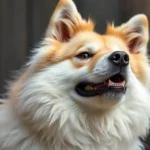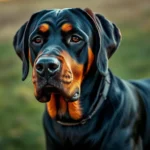
Introduction
When it comes to dog breeds, understanding their characteristics, history, and care requirements is essential for potential owners. Each breed has its own unique traits, and the Russian European Laika is no exception. This breed, known for its loyalty and versatility, has a rich historical significance and was primarily developed for hunting purposes. Understanding the Russian European Laika not only enriches our knowledge of canine diversity but also helps prospective owners make informed decisions about dog ownership.
History of the Russian European Laika
The origins of the Russian European Laika can be traced back to ancient times, where it was bred from various indigenous dogs in Russia. This breed shares ancestry with other Laika breeds, such as the Siberian Laika, which also served similar purposes in hunting and herding. The Russian European Laika was primarily developed for its ability to track game in the dense forests of Russia, showcasing its remarkable instincts and intelligence.
In Russian culture, the Laika holds a significant place as a working dog. Its role in hunting and herding was not only practical but also cultural, representing the bond between humans and their animal companions. Over the years, the breed has evolved, adapting to the changing needs of society while maintaining its innate hunting skills.
Physical Characteristics
The Russian European Laika is a medium-sized dog, typically weighing between 45 to 60 pounds and standing about 20 to 24 inches tall at the shoulder. This breed is well-proportioned, with a strong build that reflects its working heritage.
Coat Color and Texture
The coat of the Russian European Laika is one of its most distinctive features. It is thick and dense, designed to withstand harsh weather conditions. Common coat colors include a variety of shades such as white, gray, black, and red, often with unique markings that add to the breed’s charm.
Distinctive Features
This breed is characterized by its erect ears and bushy tail, which often curls over the back. The facial structure is typically wedge-shaped, giving it a keen and alert expression. Comparatively, the Russian European Laika has some similarities with other Laika breeds, but its size and specific coat characteristics set it apart.
Temperament and Behavior
The temperament of the Russian European Laika is one of its most appealing traits. This breed is known for being intelligent, loyal, and energetic. They thrive in environments where they can engage in physical activities and mental challenges.
Social Behavior
The Russian European Laika is generally friendly and sociable, making it a good companion for families and singles alike. However, their strong hunting instincts can lead to a high prey drive, so early socialization with other animals is crucial. Proper introductions and training can foster positive interactions with other pets.
Training and Obedience
Training a Russian European Laika can be both rewarding and challenging. Given their intelligence, they are quick learners, but they can also be independent and stubborn at times.
Tips for Effective Training
- Start Early: Begin training as a puppy to instill good habits.
- Use Positive Reinforcement: Reward-based training methods work best.
- Be Consistent: Consistency is key in commands and routines.
Health and Lifespan
The Russian European Laika is generally a healthy breed, with a lifespan ranging from 12 to 15 years. However, like all breeds, they are predisposed to certain health issues.
Common Health Issues
- Hip dysplasia
- Eye problems
- Skin allergies
Importance of Regular Veterinary Care
Regular veterinary check-ups are essential to monitor the Russian European Laika‘s health and catch any potential issues early. Recommended health screenings can help ensure that your dog stays in optimal condition.
Care and Maintenance
Caring for a Russian European Laika involves understanding their grooming, dietary, and exercise needs.
Grooming Needs
The thick coat of the Russian European Laika requires regular grooming to prevent matting and shedding. Brushing at least once a week is recommended, with more frequent grooming during shedding seasons.
Dietary Requirements
Feeding your Russian European Laika a balanced diet is crucial for their health. High-quality dog food formulated for medium to large breeds is advisable. Consult with a veterinarian to determine the best diet tailored to your dog’s specific needs.
Exercise Needs
This breed is highly energetic and requires regular exercise to stay healthy and happy. Daily walks, play sessions, and mental stimulation through training or games are essential.
Ideal Living Conditions
While the Russian European Laika can adapt to various living situations, they thrive in environments that allow for ample exercise, such as rural or suburban areas. They may not be the best fit for apartments unless their exercise needs can be met.
Living with a Russian European Laika
When considering bringing a Russian European Laika into your home, it’s important to understand their compatibility with different lifestyles.
Best Environments for the Breed
The Russian European Laika is suitable for families, singles, and seniors who can provide the necessary care and attention. They are known to be good with children and can make excellent family pets when properly trained and socialized.
Activities and Hobbies
The Russian European Laika excels in various activities, including:
– Hunting: Their natural instincts make them adept hunters.
– Agility: They enjoy agility training, which provides both mental and physical stimulation.
– Companionship: They thrive on social interaction and companionship, making them great family pets.
Tips for Integrating a Laika into Your Home
- Create a Safe Space: Provide a comfortable area for your dog to relax.
- Establish a Routine: Consistency in feeding, walks, and training helps your dog feel secure.
- Engage in Activities Together: Spend quality time with your Laika through play and training.
Choosing a Russian European Laika
Before adopting a Russian European Laika, there are several considerations to keep in mind.
Lifestyle Considerations
Assess your lifestyle to determine if you can meet the needs of a Russian European Laika. They require time, commitment, and an active lifestyle.
Reputable Breeders vs. Rescues
When selecting a dog, consider adopting from reputable breeders or rescue organizations. Research and ask questions to ensure you are choosing a healthy and well-socialized dog.
Questions to Ask When Selecting a Dog
- What is the dog’s health history?
- How has the dog been socialized?
- What are the dog’s training needs?
Conclusion
The Russian European Laika is a remarkable breed with a rich history and distinct characteristics. From their physical traits to their temperament and care needs, understanding this breed is vital for anyone considering dog ownership. Their loyalty, intelligence, and versatility make them a wonderful companion, whether for hunting or as a family pet.
By appreciating the unique qualities of the Russian European Laika, potential dog owners can make informed decisions, ensuring a rewarding relationship with their furry friend. As with any breed, knowledge is key to fostering a happy and healthy life together.
This comprehensive guide should help you better understand the Russian European Laika and what it takes to welcome one of these extraordinary dogs into your life.









